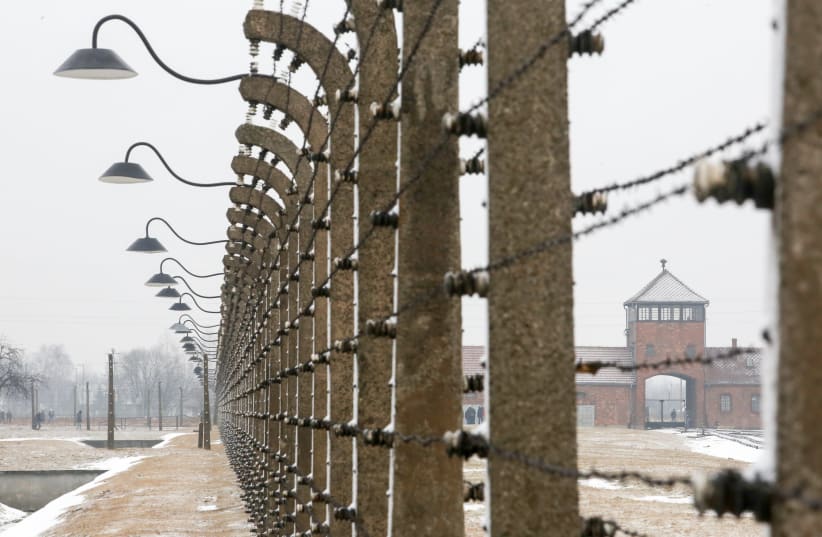April 22 is a date that binds two groups of people who shared the same tragic fate. It is the date that commemorates the revolt of the prisoners of Jasenovac, the death camp that claimed the lives of hundreds of thousands of Jews, Serbs and Roma.
While the numbers are not as high as Auschwitz or Treblinka, Jasenovac was notorious for its cruelty and the high number of young children who were victims. The saddest point is that there is no final decision on what the final number of victims is. The Croatian authorities have been decreasing it down to a mere 30,000 and sweeping it under the carpet, only officially commemorating Jasenovac in haste on this specific day.
The Jewish and Serbian people have a history together based on positive relations and suffering together.
When the Sephardi Jews were forced to leave Spain, a large number of them settled in the Balkans. This was a place where they were able to practice their religion freely and conduct their trades undeterred. There were no pogroms, nor did they live in ghettos. This was a region that treated them as equals, and the Serbian people who were continuously harassed by the Ottomans due to their refusal to convert to Islam knew exactly how it felt to be persecuted.
After 500 years under the yoke of the Ottoman Empire, the Balkan peoples succeeded in fighting back for their freedom and a new era began. In the Kingdom of Yugoslavia, the Jewish people were an integral part of society and enjoyed a respectable life without fears of repercussion. Many felt so strongly for the country they lived in that they fought on the side of the Serbs against the Austro-Hungarian Empire and the Central Powers in the First World War as brothers in arms. The years after the Great War were also prosperous for the Jewish community in Serbia.
With the Second World War, disaster struck the two ethnicities. The kingdom fell apart, with the Slovenian, Croatian and Bosniak people siding with the Axis powers in exchange for land and power. The Serbian people, who bravely protested in the streets against joining the Axis powers, were brutally punished by having their capital city bombed ruthlessly on April 6, 1941.
Hitler, furious that such a small ethnic group would show such staunch rejection of his country’s offers, ordered Operation Retribution to be carried out, bombing that began in the early hours of Sunday morning when unprepared civilians were sleeping in their beds. More than 2,000 people were killed and the Nazis targeted monuments of Serbian culture, such as the National Library, which lost thousands of precious antique books in the fires that broke out from the bombing.
After that treatment, the Nazis occupied the country and set up a puppet government, just like they had done in France. This was a difficult time for both Serbs and the Jews, but some of the worst horrors were seen just across the border in Croatia, whose newly independent government had eagerly taken up the mantle of fascism.
The Jasenovac concentration camp was established in 1941, which lead to a four-year horror of torture and murders. Prisoners were starved to the point that they resorted to eating grass and dirt. Those who were executed were not shot nor gassed, but had their throats slit open in killing competitions among the guards, and parts of their bodies were cut off as souvenirs.
Children were poisoned, beaten and locked away to sleep on the cold floors of cells where they were not given food for days. Even the German officers who visited the camp found the brutality unimaginable. Cardinal Aloysius Stepinac – which the contemporary Croatian government is lobbying to be canonised by the Catholic Church – enthusiastically recommended this as an opportunity to pressure prisoners into converting to Catholicism.
Some of the most notable Jewish victims were rabbis Leib Weissberg and Simon Ungar, activist Armin Schreiner and feminist Julia Batino.
On April 22, 1945, 600 inmates made a desperate rush for their freedom, with only 60 of them managing to escape. On April 30, the Ustashe (Croatian fascists) burned down the camp to conceal their crimes, and they have unfortunately been successful, as only the survivors’ accounts provide an insight of what had happened there.
Many of the Ustashe escaped abroad, never having to face justice. Yugoslavia became a socialist country, and for the sake of upholding “brotherhood and unity” among the constituent peoples, Jasenovac’s investigations were poorly carried out and shut down prematurely.
Throughout the years, the Jewish people have always been respected members of Serbian society, and they are open about their heritage and proud of their Serbian citizenship. One of the most beloved writers in Serbia was Oskar Davico, who proudly claimed that he was a Serb of Moses’s faith.
Actor Predrag Ejdus and actress Jelisaveta ‘Seka’ Sablic are favourites among the Serbian public, and one of the most famous publishing houses was named after Jewish editor Getsa Kon. Serbia has returned property that has been confiscated during the Second World War to the Jewish people. Serbia is the first Balkan country that has been bestowed the honor of Righteous Among Nations, and takes pride in this recognition.
The Jews and the Serbs are two ethnicities that have suffered throughout history and supported each other, understanding the plights they suffered.
Let us now commemorate and mourn together the anniversary of Jasenovac, the lives that have been lost and the victims whose numbers have still not been recognised. May we never forget it.
The writer is a political researcher working for Dow Jones in Barcelona.
